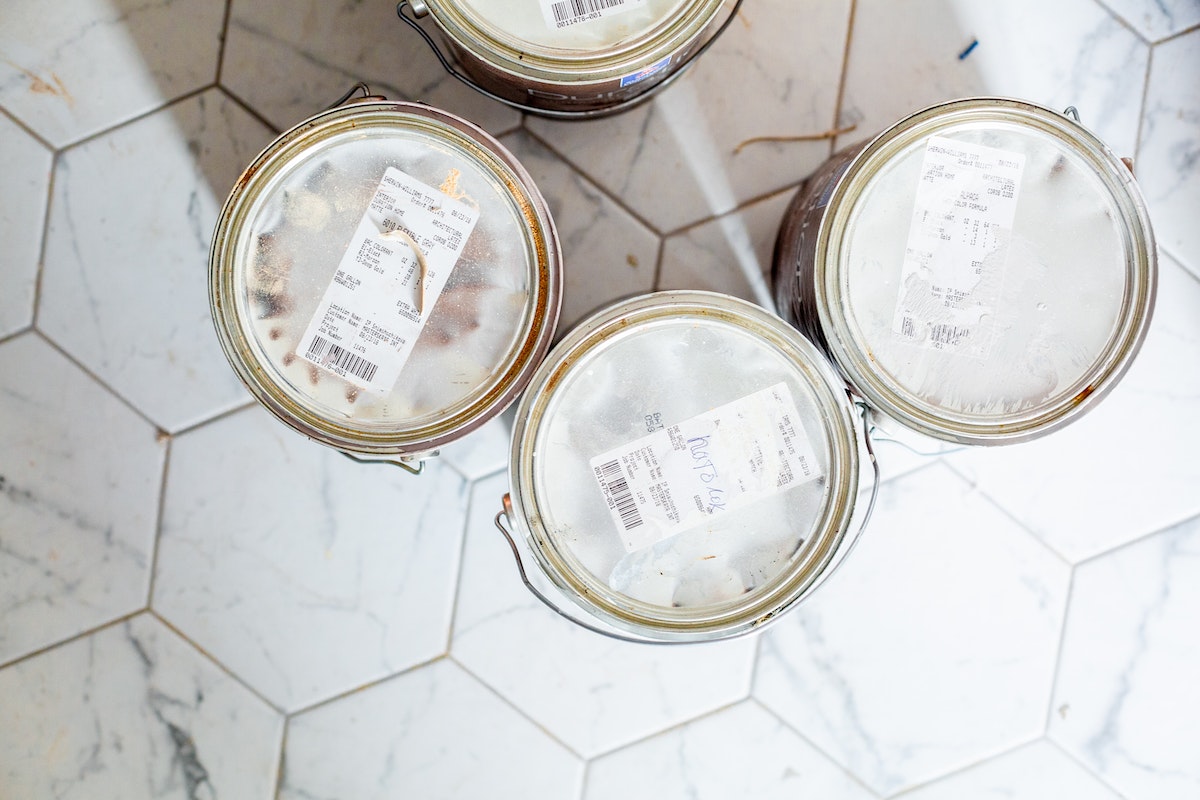It’s inevitable that at some point, you’ll have to paint a house during the rainy weather. Painting in the rain can be frustrating and dangerous, but with suitable precautions, it can be done fairly easily. In this article, we’ll go over some tips for painting in the rain so that you can stay safe and get the job done efficiently.
Prepare the Surface
Many people avoid painting during rainy weather, thinking the surface won’t dry enough. However, with the right preparation, painting during rainy weather is perfectly fine — just follow these steps. Start by thoroughly cleaning the surface with a pressure washer or power washer.
Once the surface is clean, let it dry completely — depending on the humidity and temperature, which may take a few hours or even a day. Once the surface is dry, apply a primer and start painting. If you encounter rain while painting, cover the area until the rain stops. A primer is vital to ensure the paint sticks well to the walls. Hence, if you don’t know how to do that, it is advised to hire an experienced residential contractor for this. The contractor will help you prepare the surface and apply the primer efficiently. This will ensure you don’t have to worry about repainting for a long time.

Use a Drop Cloth
Another vital thing to do is to set up a drop cloth. This will protect the ground from paint splatters and drips and make cleanup much easier. You’ll also want to ensure that any loose paint is sanded down and sealed before starting.
Once you’ve taken these precautions, you can begin painting as usual. The wet weather can be beneficial, providing added humidity to help the paint adhere better.
Watch Out for Lightning
One of the worst things that can happen when painting a house during the rainy weather is being struck by lightning. Although it may not seem like it, lightning can travel for miles and strike anything in its path. This includes houses, trees, and even people.
That is why it is important to know the risk of lightning strikes when painting a house during rainy weather. If possible, avoid working near tall objects or exposed areas during thunderstorms. If you are caught in an open area, crouch down to the ground and keep your head away from any metal objects. Most importantly, if you hear thunder, take shelter immediately and wait for the storm to pass before continuing your work.
Wear Protective Clothing
When painting in the rain, it’s essential to wear suitable clothing. First and foremost, you’ll want to wear a waterproof jacket or poncho to keep yourself dry. You’ll also want to wear gloves and boots to protect your hands and feet from paint splatters. And finally, make sure to wear a respirator or mask to avoid inhaling any fumes.
Following these tips can safely paint a house during rainy weather. Just be sure to take your time, and don’t rush the job. You can get the job done with the right precautions without any problems.
Use a Waterproof Tarp
If you’re planning to paint your house during the rainy weather, one of the best ways to protect yourself and your work is to use a waterproof tarp. Tarps come in various sizes, so you can choose one that’s big enough to cover the area you’re working on. They’re also relatively inexpensive, so you can buy a few if you need to.
Most tarps have grommets or other holes along the edges, which makes it easy to secure them with ropes or bungee cords. Once your tarp is set up, put down a drop cloth or something similar to avoid getting paint on the ground. If careful, painting in the rain can be a fun and challenging experience.
Clean Up When You’re Done
As any painting contractor will tell you, cleanup is just as important as the painting itself. This is especially true when painting in rainy weather. Not only does wet weather make it more difficult to clean up, but it can also cause paint to run and streak. As a result, it’s essential to take the time to clean up thoroughly after a day of painting in the rain.
First, remove all wet paint from your brushes and rollers. Then, wash them with soapy water and allow them to dry completely. Finally, sweep or vacuum the floor to remove paint chips or debris.
Overall, painting in the rain is possible, but there are a few things you need to keep in mind. First, wear the proper clothing and use a waterproof tarp. Second, watch out for lightning strikes and clean up when you’re done. You can successfully paint your house with the right precautions, even during wet weather.
